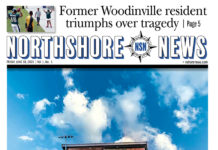By Jeff Elliott
The most significant marketing challenge of our time is the scarcity of attention from potential customers.
Bombarded relentlessly from all directions with too much information, a deluge of products and services and too many unsubstantiated claims, potential customers have tuned out, dropped out and become all but unreachable. Now resistant to communication, they can’t even process 5% of what is thrown at them daily, maybe even less.
Unfortunately, this barrier is crippling the efforts of businesses to grow and expand. Many may not even survive as a result.
“Scarcity of attention is the defining business challenge of our time,” says Jamie Mustard, a messaging, design and communications expert for industrial firms. “Today, it’s the attention of others that is the most valuable commodity in the digital age. In this environment, a company’s very survival depends on cutting through the sea of white noise.”
If there is one telling example of the symptoms of this scarcity of attention, it is the anxiety and frustration over not being seen or heard that can permeate throughout an organization from ownership, through the C-level execs, sales team and even down to the employees.
“Many businesses come up with a great idea for a product or service, but they just can’t seem to get any traction from a marketing perspective,” says Mustard. “So, owners and top execs are often just left wondering why they aren’t garnering the attention they think they deserve and why sales are low.”
Fortunately, all is not lost in the fight to break through the noise and be heard.
The solution for standing out and being remembered is radically simple, even if seems a bit counterintuitive. To thrive in business today it is imperative to grab the attention of the prospect in an instant with a message that addresses a direct and immediate need like a sledgehammer, explains Mustard in his book, the Iconist, the Art and Science of Standing Out.
The message must also be utterly and brutally simple, yet big and bold enough to hit the prospect between the eyes and lodge in their mind instantly.
“You have an instant to grab a prospect’s attention or you likely will lose them forever,” explains Mustard. “The message must affect them before they even have a chance to process it. If not, they are already moving on to the next website and another company.”
Unfortunately, many companies lose the battle because the message is overly complicated, unfocused and delivered with little or no repetition.
“The inclination is to promote all 25 features of a product or service,” says Mustard. “It often goes against the grain to strip down the message to the one bold statement that should be the lead of every interaction with potential customers.”
To stand out, capture attention and imprint it in the mind, the message must also include oversized, bold images or phrases that can be instantly understood. Finally, the message must address an emotional concern or even an immediate pain point.
The next step is to repeat the message relentlessly like a drum, a never-ending mantra, at every contact point with the customer. Only then will the message cut through the scarcity of attention and become an identifiable, even defining message for the company.
“There is a snowball effect when you deliver a clear, bold message repeatedly,” says Jeff Elliott, CEO of Power PR, a marketing firm that for 29 years has written and facilitated placement of editorial features in trade magazines. The challenge, however, is defining success, as it relates to repetition.
“Often companies get a message out a few times and then wonder why, with the ‘repetition,’ the phones are not ringing off the hook. That is because true repetition is a matter of volume. It is not five messages delivered, but rather 80, or better yet, 800. It’s relentless and repetitive over time,” says Elliott.
One of the barriers to generating repetition is the fact that most companies are hesitant to invest in marketing at all, or only for a few months.
“Where most companies go wrong is too many give up after signing up with a marketing service that doesn’t guarantee actual results and get no ROI,” says Elliott.
“However, there are marketing firms where you don’t have to take a ‘leap of faith’ that will guarantee tangible results,” he says, adding that a well-executed performance-based campaign should be able to generate 55 to 80 feature articles about a company in a year.
As for the content, the messages ideally should avoid unsubstantiated claims and instead include objective third-party endorsements, while focusing on the benefit to the user, rather than the product specifications. It is only this type of “real” content that causes a buying decision.
“Without a chorus effect and a clear, credible message, no one will believe it,” adds Mustard. “Unless the authorities in the industry are saying the exact same thing at the exact same time, it will not cut through in a world overloaded with too much messaging.”
The concepts as outlined in Mustard’s book are already garnering the attention from major industry opinion leaders and the media.
“In a marketplace that’s more crowded, noisy, and confusing than ever, it’s harder than ever to stand out and be noticed—whether you’re designing a product, selling a service, or marketing yourself, says William C. Taylor, co-founder and founding editor of Fast Company. “Jamie Mustard offers a remarkable set of provocative ideas…to meet the business defining business challenge of our time.”
“Human attention span is today and forever’s scarcity,” adds Rich Karlgaard, publisher at Forbes. “Jamie Mustard…cracked the code. The Iconist is a must-read for all entrepreneurs, venture capitalists, CEOs and shapers of opinion.”
 Jeff Elliott is a Torrance, Calif.-based technical writer. He has researched and written about industrial technologies and issues for the past 20 years. The Iconist, the Art and Science of Standing Out is available at Amazon.com and other outlets. For more information about Power PR call (310) 787-1940, email jwe@powerpr.com or visit www.powerpr.com.
Jeff Elliott is a Torrance, Calif.-based technical writer. He has researched and written about industrial technologies and issues for the past 20 years. The Iconist, the Art and Science of Standing Out is available at Amazon.com and other outlets. For more information about Power PR call (310) 787-1940, email jwe@powerpr.com or visit www.powerpr.com.





